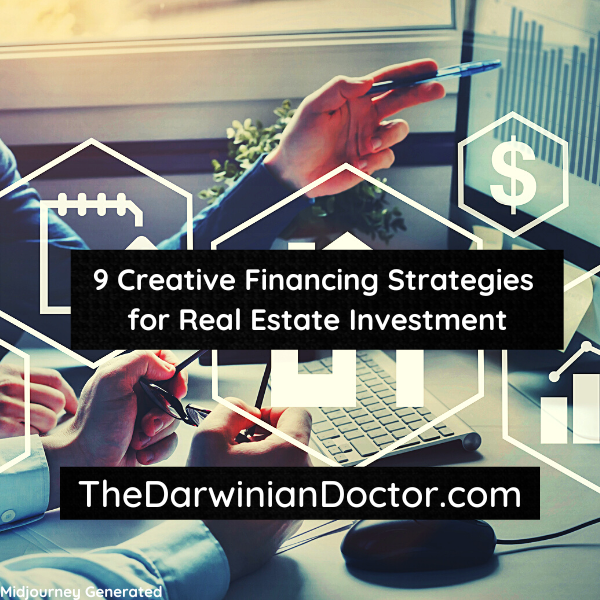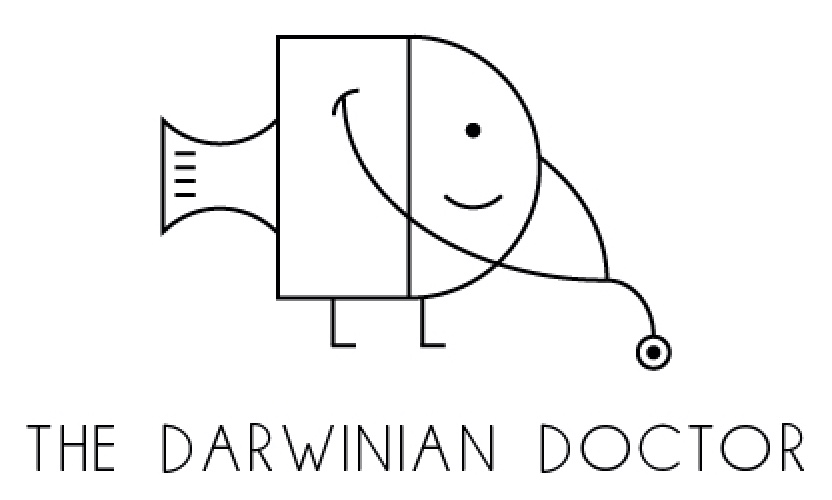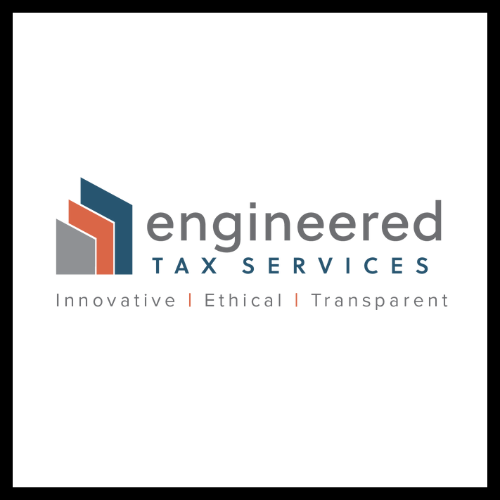Out of cash for buying real estate? No problem. Here are 9 creative financing strategies for real estate investment so you can keep growing.

This post may contain affiliate links.
Scroll down or click on a topic below to jump to a particular section.
- HELOC
- SBLOC
- 401k loan
- Hard money
- Private money
- Peer to peer lending
- Seller financing
- DSCR loans
- Joint Ventures
Introduction
One of the biggest obstacles to real estate investment is finding enough cash for the initial investment. When I completed my first real estate deal, I was a full-fledged urologic surgeon, making a few hundred thousands of dollars a year. I had a ton of student debt left over from medical school and high living costs, but I was making a great salary. Even for me, it took significant planning to scrape together enough funds to buy my first rental property.
Even in cities where the cost of real estate is considered affordable, you will often need at least $30,000 for your down payment if you’re using a conventional mortgage. (In this scenario, the purchase price might be $100,000, and your $30,000 is paying for the 25% down payment plus closing costs.)
With such high capital costs, even as a high income professional you’re likely to run out of money for down payments at some point. In another words, your desire to purchase more real estate may outstrip your ability to supply cash for down payments.
At this point, there are two options:
- Wait and save money
- Use creative financing
If you’re reading this article, chances are you aren’t satisfied with option number one. After all, it takes a lot of time to save $30,000, let alone $100,000 if you’re hoping to buy a more expensive property. So onto option two!
Creative financing
Creative financing is a fancy way of describing any situation where someone buys an asset without using a conventional loan and down payment structure. Since it’s a general term, it stands to reason that there are a lot of different flavors of creative financing.
Below, I’m going to briefly review nine different options for creative financing for real estate. My purpose here is to give you a brief introduction to these terms and concepts. It’s by no means going to be a thorough analysis of every option, but it should be a good starting point.
As always, remember that I’m not a tax or lending specialist. I’m just a real estate investor and surgeon who likes to write and educate my fellow investors. So seek professional input before you make any big decisions.
If we’re clear on that, let’s go!
HELOC (Home equity line of credit)
This first creative financing option for real estate investing is the most easy to understand, in my opinion. But it always surprises me how many people don’t know about this type of credit. A HELOC is a “home equity line of credit.” It is a flexible credit line that is backed by the equity in your own primary residence.
Homeowners have equity
If you’re a homeowner, you most likely have a mortgage. Every month, you make mortgage payments that include a mix of interest and principal paydown. So while a lot of your payment is just going to the bank as an interest payment, some portion of your payment is also paying down the mortgage loan. Your equity, or the portion of the home that you fully own, increases every month.
Your equity in your home also can go up through appreciation, which is the increase in value of an asset over time. This can happen through inflation, improvements you make to the home, or by a mismatch in supply and demand.
During the pandemic, a lot of homeowners saw a significant rise in their home value through these forces.
Tap your equity with a HELOC
When you gain enough equity, you can talk to a lender about a HELOC. With this option, you open a line of credit with a bank that allows you to borrow up to a certain dollar figure that’s determined by how much equity you have in your home. During the draw period, which is typically ten years, you can withdraw and repay money as you see fit. After the draw period, the loan typically converts to a traditional type of mortgage where you must pay it back
The total amount available in your credit line depends on your LTV, or “loan to value” ratio. The total amount of debt you have on the house, including your primary mortgage, can’t exceed a certain percentage set by the bank. This could be 70-90%, depending on the bank.
While you have money withdrawn from the HELOC, you pay an interest rate to the bank for the privilege of borrowing the money. The payment is usually “interest only,” which means that you are only charged interest every month. This rate might be fixed for some introductory period, and then usually is a variable rate based on the lending rate target set by the Federal Reserve. You can pay the principal back at any point during the draw period, as long as you faithfully make the interest payments every month.
Typical uses of a HELOC
There are not many restrictions on how you can use the money, but the most common uses are for home renovations, consolidation of debt, or tuition. It is perfectly legal to use the money to invest into real estate, however.
I used the creative financing option of a HELOC to purchase real estate and also renovate properties as well.
If you are looking for a HELOC, you can search the internet and find many options. Your local credit union may offer this type of loan, as do many larger banks as well.
A major danger of using home equity loans to invest is that investments can fail or perform poorly. If this happens and you suddenly can’t make your HELOC payments, you may lose both your investment and also your primary home. For this reason, many conservative investors will advise against using this strategy for investment property.
Read about my real estate investment empire here.
SBLOC (Security backed line of credit)
Another one of my favorite creative financing methods for real estate is an SBLOC, or a security backed line of credit. This is similar to the HELOC that I described above, except that the asset used to back the line of credit is a group of stocks or index funds.
For example, if you have $100,000 of VTSAX (Vanguard index funds) in a taxable brokerage account, there are banks that will allow you to borrow against the value of those stocks. This type of line of credit will function similarly to the structure I mentioned above for HELOCs, with a flexible draw period and variable interest rates.
The loan to value ratio for an SBLOC depends on the type of stocks you put up as collateral. Typically, using less risky investments like an index fund as collateral will allow you to borrow up to 75% of the value of those funds at any given moment. Using riskier individual stocks like Tesla to back your SBLOC will usually cap your borrowing power at a lower LTV like 50% of the value of the stocks.
What do you think about Tesla? I love the cars, but the stock has been a rocky ride.
This type of product can also be called a Pledged Line of Credit, because you are “pledging” stocks to be collateral for the line of credit. While you draw money from the SBLOC, you are restricted from selling or trading the underlying assets.
Why I love the SBLOC
I love the SBLOC because it offers a very tantalizing mix of features:
- You don’t have to sell your stocks to access capital
- Your stocks continue to grow even as they back the loan
- You don’t incur capital gains taxes when you draw on the credit
However, there are risks. For example, a risk specific to an SBLOC is something called a “margin call.” If you’re borrowing from the SBLOC and the value of your stocks goes down, you might be forced to immediately sell securities. This could happen in the event of a big stock market crash, for example.
I have a full blog post about SBLOCs here: Security Backed Line of Credit (SBLOC): Never Sell Stocks Again
401(k) Loan
What if you don’t own a primary residence and don’t have a lot of stocks lying around in a taxable brokerage account? Well, you can borrow against your retirement account!
What is a 401(k)?
If you’ve been employed by companies of a certain size, a common benefit is access to a retirement plan like a 401(k). Investopedia states “A 401(k) plan is a company-sponsored retirement account to which employees can contribute income, while employers may match contributions.”
The reason why 401k plans are popular is that you are able to invest your money into the stock market pre-tax. Your money grows tax-free as well, and then you pay taxes only when you withdraw money from your 401k in retirement. The amount of money you can invest into your 401k changes every year. In 2023, the IRS raised the contribution limit $22,500.
Typically, retirement savings in a 401k just sit undisturbed, happily increasing and compounding until you need it in retirement. While I was an employed surgeon in Southern California, I maxed out my 401k every year, and it grew to a surprising amount over that time.
But the IRS knows that sometimes people need access to capital, and that for many, their 401k comprises a large percentage of their net worth. Therefore, there is a procedure to to take a loan out from your 401k. Of course, you could always just directly sell assets from your 401k and cash it out, but you are penalized for doing so prior to the age of fifty nine and a half. Not only are you taxed on they money, but you’re also hit with a 10% additional penalty.
Did you know you can withdraw money tax free from your retirement accounts using SEPP plans? Read up on this option here: SEPP plans: How to access your retirement accounts before age 59 ½
How much can you borrow?
But many 401k plans allow you to withdraw up to $50,000, tax free, as long as you pay it back within a set period of time. This time period is defined by your retirement plan, and can be from 1-5 years. While you have money withdrawn from the retirement account, you are required to submit monthly payments of the loan principal plus a set interest rate.
The good news is that both the principal and interest go back into your retirement fund. As long as you faithfully make the payments, you are not taxed on the loan. If you fail to make the payments, the loan advance is considered a taxable withdrawal event, though. You’ll have to pay taxes and penalties on the loan amount come tax time.
401(k), 403(b) and 457(b) plans can all offer loans, but it’s up to your plan administrator.
One of the good features of 401k loans is the flexibility. You can spend the money on whatever you want, unless your plan specifies otherwise. In our case, I used a 401k loan as a creative financing option to finish renovations on a real estate investment property. But you could certainly use a 401k loan as a downpayment to grow your real estate investment portfolio.
However, a major downside of 401k loans is that the loaned capital is no longer in the market. This can be a big setback to your retirement nest egg.
Go to this link for more information from the IRS about 401k loans.
Hard Money
Hard money loans are a common feature in real estate investment. They’re popular when traditional lenders are not an option for one reason or another. Hard money lenders will lend out their own money for specific real estate deals on a case by case basis. There is no expectation of a personal relationship in a hard money loan. Rather, the decision to extend a hard money loan is more about the merits of the real estate deal itself.
If you have a quality underlying asset and a reasonable plan to execute the deal, you’re likely to find a willing hard money lender. It is one of the more common creative financing options for real estate investing.
Features of hard money
There may or may not be a formal credit check in situations like this. However, there is formal paperwork that defines the terms of the loan and various scenarios that might arise during the course of the loan. Due to the higher risk involved in this type of loan, you will almost certainly see a higher interest rate with a hard money loan than a traditional lender. There may also be a hefty origination fee to begin the loan, typically 1-2% of the entire loan amount.
The expected payback term for a hard money loan is also typically much shorter than a traditional loan. Traditional mortgages for 1-4 unit real estate investment properties will have a 30 year term. For a hard money loan, it’s quite common for the lender to expect full repayment of the debt within 6-12 months.
This presents a risk for hard money, since the high interest rates can make long term use of this financing very expensive. Servicing the debt can erode all the cash flow from the monthly rental income, for example. And if you can’t service the debt, the hard money lender will expect to receive ownership of the underlying asset.
That being said, hard money can be one of the best options for short term financing. Hard money lenders can provide short term financing to get a deal off the ground. If a real estate investor has a high confidence that they’ll be able to sell or refinance their property in the near future, this could be one of the better creative financing techniques.
Private money (friends and family)
A private money loan is similar to a hard money loan, but private money lenders will typically make their decision based on their relationship to the investor. If a private lender has a strong relationship and trust in the investor, they can choose to lend out their money without as much scrutiny as a typical mortgage loan.
If you’re lucky enough to have financially successful people in your life, they can act as private lenders for your investments. To do this well, it requires having a trusting relationship with your friends or family, as well as a willingness to change the nature of your relationship. Because when you take out a personal loan from a close relation, it’s a different situation from the traditional method of using other people’s money, like a loan from the bank.
If your investments do not perform well, it could put significant strain on your personal relationship.
But if you have confidence in your investment and a family member or friend with both money and a compatible personality, this creative financing method can be a great way to raise money for a real estate purchase. A family member might be significantly more understanding if you run into problems, and is likely to be more flexible than a conventional lender if you need to change the terms of your agreement.
If you do go this route, I would certainly recommend utilizing a lawyer to draft up a formal promissory note that clearly spells out the terms of your private loan.
Peer to peer lending
Peer to peer lending was in theory a good idea. The basic premise was that you could invest your money with a peer to peer website and expect that your money will be lent out to investors. The website and their team would take care of the vetting of potential investors and then lend out your money. The site would charge enough of a spread to make a profit and return a good profit to you as well.
On the real estate investment side, you could expect to to utilize these sites for creating financing in a way that cut out the onerous regulations of the federally backed mortgage industry. Of course, there would be scrutiny into your finances and creditworthiness, but not as much as with a bank.
However, in 2008, the SEC decided to regulate peer to peer lending sites, and over time many P2P lending sites came to resemble regular banks. Many P2P sites simply closed as a result of the regulation. So now, investment opportunities into peer to peer lending sites are limited.
On the recipient side, there are a still a few options for seeking money for your real estate deals online.
Given how quickly the landscape changes with these things, I hesitate to list any sites, but Kiva.org is one that exists currently.
Seller financing
Another popular strategy of successful real estate investors is seller financing. Also known as “owner financing,” this option basically has the original property owner agree to act as the mortgage lender, instead of a bank.
A typical seller financing deal might look like this: Ms. Smith owns 123 Main Street. The existing mortgage was paid off long ago, and Ms. Smith has decided to sell her property. Mr. Kim is interested in buying the property, but doesn’t want to get a traditional bank loan because he want more flexibility in the debt than banks typically allow. Mr. Kim asks Ms. Smith if she would consider the following deal:
Example seller financing deal:
- Ms. Smith will provide seller financing for the sale of her property
- Mr. Kim will give Ms. Smith her full asking price, but he will provide only a 5% down payment.
- The remaining 95% of the purchase price will be financed by Ms. Smith.
- He will provide her with a monthly payment equivalent to a 20-30 year amortization that will be paid directly to Ms. Smith.
- At the 10 year mark, the payment will balloon, which means that Mr. Kim will pay off the loan in full.
Seller financing is a beloved option of creative financing for real estate, because it can really take on whatever form is most beneficial to both parties. In the scenario above, Ms. Smith is able to enjoy monthly payments to cover her living costs, all while avoiding a sudden influx of income that would trigger capital gains taxes. She also gets the full asking price that she wants, though her full payday is some time in the future. Mr. Kim avoids the lengthy underwriting process of a bank, and also is able to purchase a property with only 5% down, instead of 25-30% that would typically be required for such a deal.
Again, it’s important that these deals are property backed by strong contracts from a real estate lawyer.
Seller financing variants
A variant of the deal can include something called a “wraparound mortgage,” where the original mortgage of a property is left in place. The seller provides financing that wraps the new loan around the existing mortgage. The seller continues to make normal mortgage payments, though she no longer owns the property. This scenario assumes that the original lender allows this to happen.
A wraparound mortgage is a type of “subject-to” financing, where a seller will leave their mortgage intact, even though they are selling their property to a buyer. The purchase is “subject-to” the existing financing. There are a number of additional variations that are beyond the scope of this post.
There are risks on both sides with seller financing, but its flexibility allows for many different ways that this strategy can be used to close a deal in such a way that both parties win.
DSCR loan (Debt service coverage ratio loans)
The next creative financing option for real estate investing is the DSCR loan.
Most real estate financing depends on a borrower’s ability to pay back their loan. This decision is based on factors like the buyer’s credit score and net worth. A DSCR loan is different. DSCR stands for debt service coverage ratio, and is a type of financing that depends on the potential income of a property, rather than your financial details.
Said another way, the deciding factor in a DSCR loan is the merit of a real estate deal itself, rather than a real estate investor’s finances.
Although you’ll need to still come up with a downpayment, you can get a DSCR loan even if a traditional underwriter would judge your debt-to-income ratio too high.
As funding sources go, you’re likely to find DSCR loans to have a higher interest rate than a traditional mortgage. This is to compensate the lender for the higher risk of the debt. Also, you’ll likely need to demonstrate to the lender that you’re experienced with real estate transactions and execution. Their financial model depends on the successful execution of the real estate deal, so they want to have a high probability of your plan coming to fruition.
There are other potential disadvantages of DSCR loans, like higher origination costs and prepayment penalties. But as a method of creative real estate investing, it’s a clear winner.
Joint ventures
A joint venture, or JV deal, is another method of creative financing. I left it last, because it doesn’t necessarily mean that you can’t use a traditional mortgage for your deal. It just means that you are going to include another individual (or company) to either provide capital or lendability.
If you are limited on capital or have a bad credit score, you could partner with someone. Your partner can put up the money for a down payment or even apply for the mortgage. In return for their contribution, you can do more of the leg work with the property management or renovations.
This is a good option for real estate investors who are strapped for cash but have valuable experience or connections. It’s also a great way for busy professionals to put their money to work in the real estate market without having to do everything themselves.
There are a million ways to structure a joint venture deal, so each one will be different. The best JV deals are structured in a way that both sides feel happy. You want both parties well compensated for their money, experience, or hard work.
Conclusion
I hope you can appreciate now that there are many ways to finance real estate investments. Traditional mortgages are only one of many options that exist. In fact, creative financing can make real estate investment possible no matter the financial situation of the investor.
I hope you realize that this is a broad overview of creative financing options. If you want to pursue any of these options, please do your due diligence. But this post is a good reminder that lack of personal funds should not prevent you from real estate investing if that’s truly your goal.
Good luck out there!
— The Darwinian Doctor
Have you used any of these options? Let me know in the comments below and please subscribe to the newsletter so you don’t miss a post!
Want to support the blog?
- Join our investor club at Cereus Real Estate
- Visit my Recommendations page
- Check out my wife’s food blog: Eat Dessert First
- Stay at our luxury short term rentals
- Check out my TikTok channel
- Follow me on Instagram
- Follow me on YouTube
- Contact me with questions
Perhaps you’re more of a Facebook type?
Are you a physician, spouse, or professional and you’re interested in using Real Estate to gain financial freedom? Join us in our Facebook group and accelerate your journey!









3 comments
A good mortgage broker will have a system for ensuring you are kept informed throughout the whole process, saving you time and enabling you to stay focused on finding your ideal home.
Back in the late 90’s is when I used a hard money loan to purchase my first property. The beauty was that they lend on the equity. The “seller finance” Option is a powerful strategy. I wish i had learn that technique alot sooner in my real estate investing business. I really had no idea that there are thousands of seller who are more than willing to carry financing. Thank you for this article.
Great point! This can be a powerful technique!